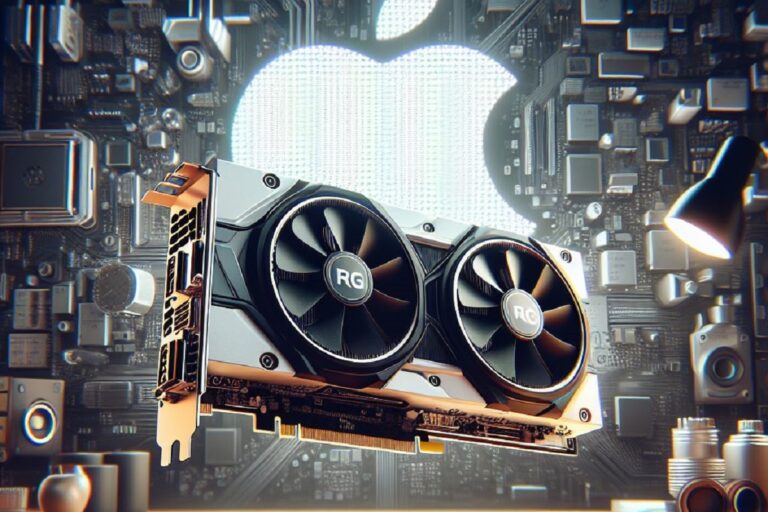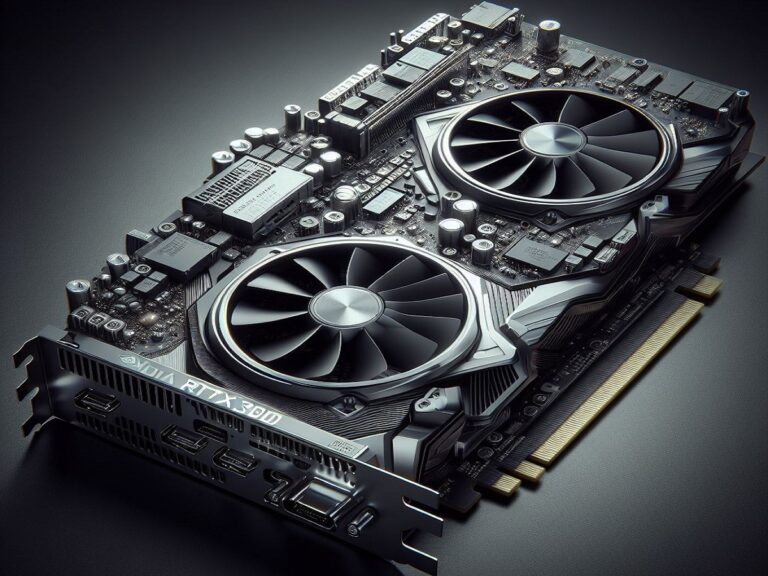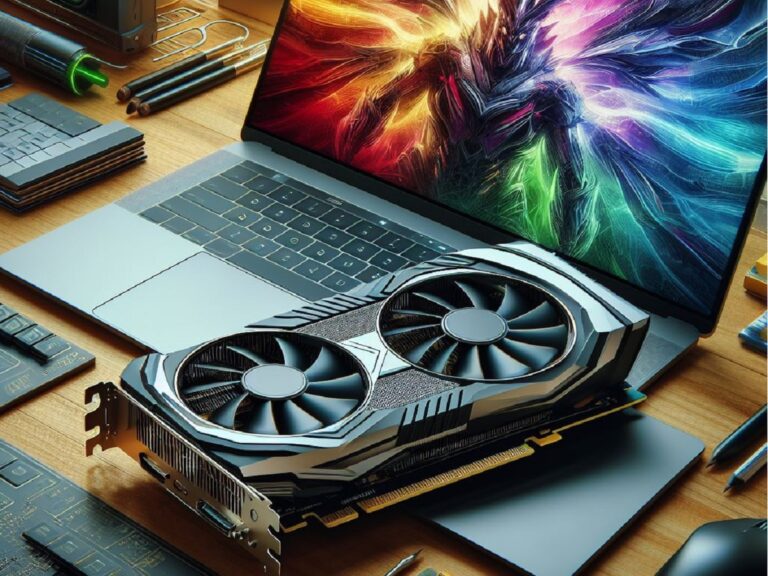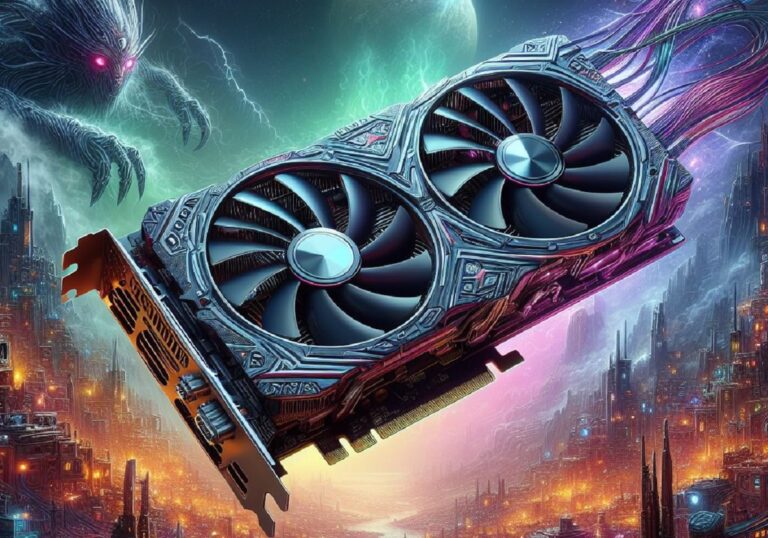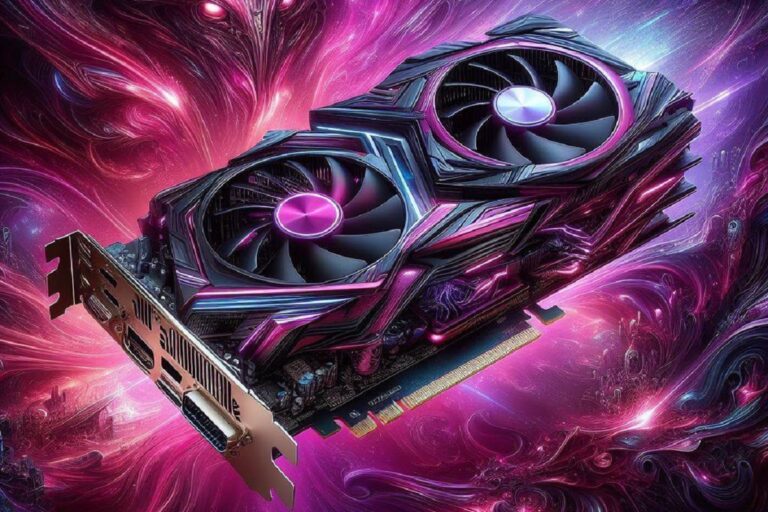Solidworks®, the industry-leading 3D CAD software, demands a powerful graphics card (GPU) for smooth performance, especially with complex models and simulations. The right GPU can significantly boost your workflow by accelerating rendering, handling large assemblies effortlessly, and delivering a visually stunning experience. But with numerous options on the market, selecting the ideal graphics card can be overwhelming.
This comprehensive guide dives deep into the best graphics cards in 2024 for Solidworks users, considering factors like budget, performance needs, and software compatibility. We’ll explore top contenders from NVIDIA’s RTX and Quadro series, analyze their strengths and weaknesses, and offer expert recommendations to help you find the perfect GPU for your Solidworks setup.
Whether you’re a seasoned engineer or a budding designer, this guide equips you with the knowledge to make an informed decision and unlock the full potential of Solidworks. Let’s navigate the world of graphics cards and discover the one that empowers your creativity and streamlines your design process.
Top 6 Best Graphics Card For Solidworks
- MSI Gaming GeForce RTX 3090 24GB GDRR6X – Best Graphics Card for Demanding Workloads
- MSI Gaming GeForce GT 710 2GB GDRR3 64-bit HDCP – Best Graphics Card for Basic Use
- MSI Gaming GeForce RTX 3080 LHR 10GB GDRR6X – Best Graphics Card for High-End Gaming (Efficiency Focused)
- ASUS Dual GeForce RTX 4070 Super OC Edition Graphics Card – Best Graphics Card for Next-Gen Enthusiasts
- ASUS GeForce RTX 2060 Overclocked 6G GDDR6 – Best Graphics Card for Budget-Conscious 1080p/1440p Gaming
- Zotac Gaming Graphics Card GEFORCE RTX 3060 – Best Graphics Card for Value-Driven 1080p & 1440p Gaming
1. MSI Gaming GeForce RTX 3090 24GB GDRR6X
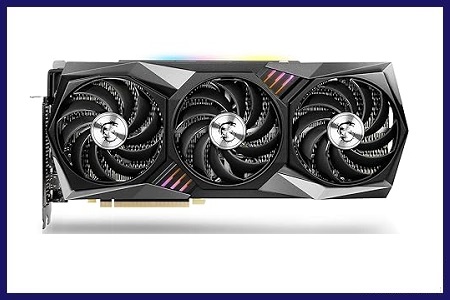
Key Features
The MSI Gaming GeForce RTX 3090 24GB GDRR6X is a behemoth in the graphics card world, boasting immense power for gamers, creators, and even professional applications like Solidworks. In this review, we’ll dissect its capabilities, explore its strengths and weaknesses, and help you decide if it’s the right fit for your needs.
Unparalleled Performance:
The RTX 3090 architecture packs a serious punch, boasting 10496 CUDA cores and a whopping 24GB of GDDR6X memory. This translates to buttery smooth frame rates in even the most demanding games at high resolutions. For creators, the massive memory pool tackles complex 3D rendering and video editing projects with ease.
Cooling Under Pressure:
MSI’s Tri-Frozr 2 thermal design keeps this beastly card cool and quiet. Three powerful fans and a robust heatsink ensure optimal performance even under heavy loads. This is crucial for maintaining stability during long rendering sessions or intense gaming marathons.
Luxury Features:
The RTX 3090 offers premium features like NVIDIA DLSS for AI-powered upscaling and ray tracing for hyper-realistic lighting effects. Additionally, its multiple display outputs make it ideal for multi-monitor setups, perfect for creative workflows.
The Trade-Offs:
Power like this comes at a cost. The RTX 3090 has a hefty price tag and requires a powerful PSU (at least 850W) to function properly. Its sheer size might also necessitate a spacious case.
Who Should Consider This GPU?
If you’re a professional user dealing with complex 3D modeling, high-resolution video editing, or crave the ultimate gaming experience, the MSI RTX 3090 is a top contender. However, for casual gamers or those on a tighter budget, a less powerful option might suffice.
Final Verdict:
The MSI Gaming GeForce RTX 3090 24GB GDRR6X is a powerhouse graphics card for demanding users. It delivers phenomenal performance, boasts premium features, and runs surprisingly cool under pressure. However, the high price tag and power requirements make it a niche offering. If you have the budget and the need for unparalleled performance, the RTX 3090 is a worthy investment.
2. MSI Gaming GeForce GT 710 2GB GDRR3 64-bit HDCP
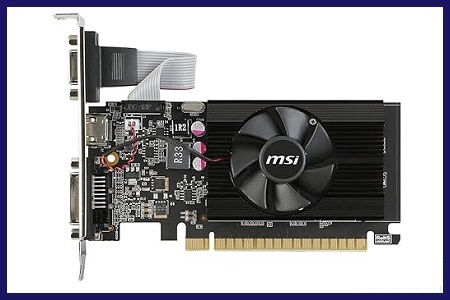
Key Features
The MSI Gaming GeForce GT 710 2GB GDDR3 64-bit HDCP carves out a niche in the graphics card market. This budget-friendly option caters to those seeking a straightforward upgrade from integrated graphics or a low-profile solution for compact PCs.
Affordability & Compact Design:
Standing out for its attractive price tag, the GT 710 makes it a viable choice for cost-conscious users looking for a basic performance boost. Its small size and low power consumption also make it ideal for space-restricted builds like small form factor PCs and HTPCs (Home Theater PCs).
Everyday Functionality:
While not designed for heavy-duty gaming or demanding creative applications, the GT 710 handles everyday tasks with competency. Expect reasonable performance for web browsing, video playback, and even casual gaming at lower resolutions. Additionally, the HDMI and DVI ports offer flexibility for connecting multiple displays.
Target Audience:
This graphics card is a suitable option for several user groups. For those with integrated graphics seeking a simple upgrade for everyday tasks and casual gaming, the GT 710 delivers a noticeable improvement without breaking the bank. Similarly, for users building compact PCs where space is a premium, the low-profile design makes it a strong contender. It can even function as a secondary display card for basic tasks while a more powerful GPU tackles demanding applications.
The Verdict:
The MSI Gaming GeForce GT 710 2GB GDRR3 fills a specific need in the market. It provides a basic and affordable boost for everyday PC use or space-constrained builds. While not a powerhouse for high-end tasks, it offers a clear improvement over integrated graphics at a budget-friendly price point. If your needs prioritize basic functionality and affordability, the GT 710 is a worthy option to consider.
3. MSI Gaming GeForce RTX 3080 LHR 10GB GDRR6X
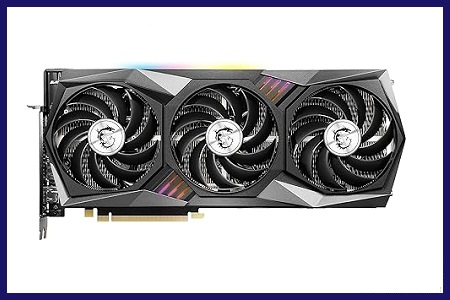
Key Features
The MSI Gaming GeForce RTX 3080 LHR 10GB GDRR6X strikes a balance between exceptional performance and efficiency optimizations. This graphics card packs a punch for gamers, creators, and even professional users, making it a compelling choice in the high-end market.
Uncompromised Performance:
At its core, the RTX 3080 architecture boasts impressive power. Expect smooth frame rates at high resolutions in even the most demanding games. The 10GB of GDDR6X memory tackles complex 3D rendering and video editing projects with ease.
Efficiency in Mind:
The LHR (Lite Hash Rate) designation indicates optimizations to limit cryptocurrency mining efficiency. This translates to a focus on genuine gaming performance for users who prioritize that application.
Cooling Under Pressure:
MSI’s trusted cooling solution ensures the RTX 3080 LHR stays cool and quiet even under heavy loads. This translates to stable performance during extended gaming sessions or demanding workloads.
Premium Features:
NVIDIA’s DLSS technology provides AI-powered upscaling for stunning visuals, while ray tracing delivers hyper-realistic lighting effects. Multiple display outputs make it perfect for multi-monitor setups, ideal for creative workflows.
The Investment:
High-end performance comes at a premium price tag. Additionally, the RTX 3080 LHR requires a powerful PSU (at least 750W) to function optimally.
Who Should Consider This GPU?
If you’re a serious gamer, a creator working with demanding projects, or a professional user seeking exceptional performance, the MSI RTX 3080 LHR is a powerful contender. However, for those on a tighter budget or with less demanding needs, a more affordable option might suffice.
The Verdict:
The MSI Gaming GeForce RTX 3080 LHR 10GB GDRR6X delivers exceptional performance for gamers, creators, and professionals. It boasts impressive specs, efficient operation, and premium features. While the price tag reflects its capabilities, the focus on genuine gaming performance makes it a compelling choice for those who prioritize that application.
4. ASUS Dual GeForce RTX 4070 Super OC Edition Graphics Card
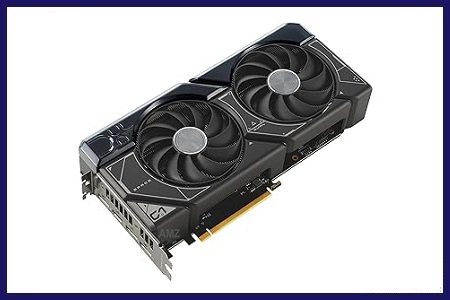
Key Features
The ASUS Dual GeForce RTX 4070 Super OC Edition muscles into the graphics card arena, wielding the power of NVIDIA’s latest Ada Lovelace architecture. This contender caters to gamers and creative professionals seeking a potent upgrade for high-fidelity experiences.
Supercharged Performance:
Boasting the cutting-edge Ada Lovelace architecture, the RTX 4070 Super OC Edition delivers exceptional performance. Expect smooth frame rates at high resolutions in even the most demanding games. The 12GB of GDDR6X memory tackles complex 3D rendering and video editing projects with ease.
AI-Enhanced Visuals:
NVIDIA’s latest iteration of DLSS 3 (Deep Learning Super Sampling) graces the RTX 4070 Super OC Edition. This technology leverages AI to upscale visuals, delivering stunning image quality while optimizing performance. Additionally, ray tracing technology brings hyper-realistic lighting effects to supported games, further immersing you in the experience.
Cooling Under Control:
ASUS’ signature Axial-tech fan design ensures the card stays cool and quiet even under heavy loads. Two fans with advanced blade construction provide efficient airflow, keeping temperatures in check for stable performance during extended gaming sessions or demanding workloads.
Built to Last:
The Auto-Extreme Technology manufacturing process ensures exceptional quality and reliability. This translates to a graphics card built to withstand the rigors of high-performance computing.
Connectivity Covered:
The RTX 4070 Super OC Edition features a variety of connectivity options. A single HDMI 2.1a port allows connection to the latest high-resolution displays with high refresh rates. Additionally, three DisplayPort 1.4a ports provide flexibility for multi-monitor setups, ideal for creative workflows.
A Target for Enthusiasts:
This graphics card caters to a specific audience. Gamers seeking exceptional performance for high-fidelity gaming and creative professionals working with demanding applications will find the RTX 4070 Super OC Edition a compelling option. However, the price tag reflects its capabilities, making it a consideration for those who prioritize cutting-edge performance.
The Verdict:
The ASUS Dual GeForce RTX 4070 Super OC Edition delivers a powerful and feature-rich package for enthusiasts. The combination of cutting-edge architecture, AI-enhanced visuals, robust cooling, and reliable construction makes it a strong contender for those seeking to push the boundaries of performance. While the price reflects its capabilities, for those who prioritize top-tier performance, the RTX 4070 Super OC Edition is a worthy investment.
5. ASUS GeForce RTX 2060 Overclocked 6G GDDR6
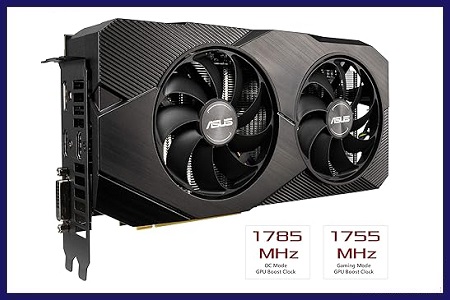
Key Features
The ASUS GeForce RTX 2060 Overclocked EVO Edition carves a niche for Full HD (FHD) and Quad HD (QHD) gamers seeking a powerful and feature-rich graphics card. This VR-ready option boasts NVIDIA’s Turing architecture and factory overclocking for smooth gameplay in even demanding titles.
FHD Domination, QHD Contender:
The RTX 2060 with overclocked capabilities delivers exceptional performance for FHD resolutions. Expect high frame rates and smooth visuals in even the latest games. While capable of handling QHD resolutions, some newer titles might require setting adjustments for optimal performance.
VR Ready:
This graphics card meets the recommended specifications for virtual reality experiences. With its processing power and VR compatibility, the RTX 2060 EVO Edition allows you to step into immersive virtual worlds.
Dual-Fan Cooling:
ASUS’ efficient dual-fan cooling solution keeps the card operating at optimal temperatures under load. This translates to stable performance and a quieter operation compared to some reference designs.
Display Flexibility:
The RTX 2060 EVO Edition features a versatile selection of display outputs. HDMI, DisplayPort, and DVI ports provide compatibility with a wide range of monitors, catering to various user setups.
A Budget-Conscious Upgrade:
While not the latest architecture, the RTX 2060 remains a relevant option for those seeking a powerful upgrade at a competitive price point compared to newer generations. This makes it a compelling choice for gamers prioritizing FHD and potentially QHD performance without breaking the bank.
The Verdict:
The ASUS GeForce RTX 2060 Overclocked EVO Edition offers a well-rounded package for FHD and QHD gamers on a budget. The factory overclocking, VR readiness, efficient cooling, and display flexibility make it a strong contender in the market. While newer architectures exist, the RTX 2060 EVO Edition remains a relevant choice for those seeking a powerful and affordable upgrade for their gaming experience.
6. Zotac Gaming Graphics Card GEFORCE RTX 3060
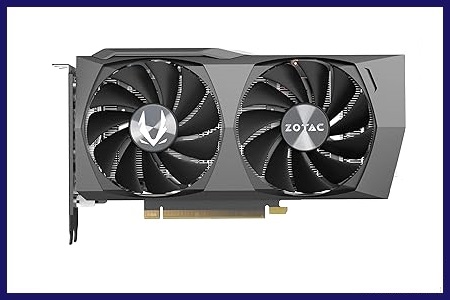
Key Features
The Zotac GAMING GeForce RTX 3060 carves a compelling niche in the mid-range graphics card market. This NVIDIA Ampere architecture-powered card caters to gamers seeking smooth performance at high resolutions without breaking the bank.
1080p Domination, 1440p Capable:
The RTX 3060 delivers exceptional performance for Full HD (1080p) gaming. Expect high frame rates and stunning visuals in even the latest demanding titles. While not the most powerful option, it tackles many modern games at 1440p resolution with some setting adjustments for optimal performance.
DLSS & Ray Tracing:
This graphics card supports NVIDIA’s DLSS technology, which utilizes AI to upscale visuals, boosting performance while maintaining image quality. Additionally, ray tracing capabilities elevate lighting effects for a more immersive gaming experience in supported titles.
Cooling Under Control:
Zotac’s cooling solution ensures the RTX 3060 operates at stable temperatures. This translates to smooth gameplay without overheating concerns, even during extended gaming sessions.
Targeting Value-Conscious Gamers:
The Zotac RTX 3060 strikes a balance between performance and affordability. For gamers prioritizing a powerful upgrade for 1080p gaming and potentially 1440p at a competitive price point, this card is a strong contender. It offers access to the latest NVIDIA technologies like DLSS and ray tracing, enhancing the overall gaming experience.
The Verdict:
The Zotac GAMING GeForce RTX 3060 delivers a compelling package for value-conscious gamers. It boasts exceptional 1080p performance, tackles many 1440p titles, and offers access to cutting-edge features like DLSS and ray tracing. The price tag makes it an attractive option for those seeking a powerful upgrade without going overboard. If smooth high-resolution gaming is your priority, the Zotac RTX 3060 is a worthy contender to consider.
FAQs
What are the key factors to consider when choosing a graphics card for Solidworks?
Software Certification: Ensure the graphics card is certified by Dassault Systèmes, the creators of Solidworks. Certified cards guarantee optimal performance and stability with the software.
Processing Power: Solidworks relies heavily on the GPU for tasks like model manipulation, rendering, and simulations. Look for cards with a high number of CUDA cores (NVIDIA) or Stream Processors (AMD) for better performance.
Memory Capacity: Complex models and large assemblies require ample graphics memory (GDDR6 or higher preferred). Aim for at least 8GB of memory, with 12GB or more ideal for demanding workflows.
VRAM Speed: Higher VRAM clock speeds allow for faster data transfer between the GPU and memory, impacting performance. Opt for cards with faster VRAM speeds for smoother operation.
Connectivity: Consider the display outputs you need (HDMI, DisplayPort) and ensure your chosen card has them.
What are the best graphics card brands for Solidworks?
NVIDIA RTX and Quadro Series: These lines offer a variety of options catering to different budgets and performance needs. RTX cards prioritize gaming performance but are still well-suited for Solidworks, while Quadro cards are specifically designed for professional applications like CAD.
AMD Radeon Pro Series: These professional-grade cards are certified for Solidworks and offer strong performance for rendering and simulations.
Can I use a gaming graphics card for Solidworks?
Yes, many high-end gaming cards from NVIDIA’s RTX series are certified for Solidworks and offer excellent performance. However, NVIDIA’s Quadro series, designed specifically for professional applications, might offer additional features and optimizations for Solidworks.
Is it beneficial to have multiple graphics cards for Solidworks?
Solidworks itself doesn’t natively support SLI (Scalable Link Interface) or Crossfire (multi-GPU configurations) for performance gains. However, Solidworks Visualize, the rendering software within Solidworks, can leverage multiple GPUs to accelerate rendering tasks.
What are some budget-friendly options for a Solidworks graphics card?
While high-end cards offer the best performance, some mid-range options can handle Solidworks adequately. Consider cards like the NVIDIA GeForce RTX 3060 or the AMD Radeon Pro WX 5700, which offer a good balance between affordability and performance for less demanding Solidworks use.
